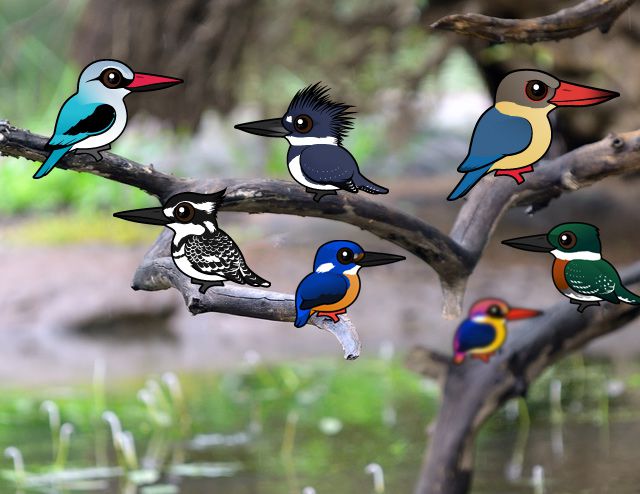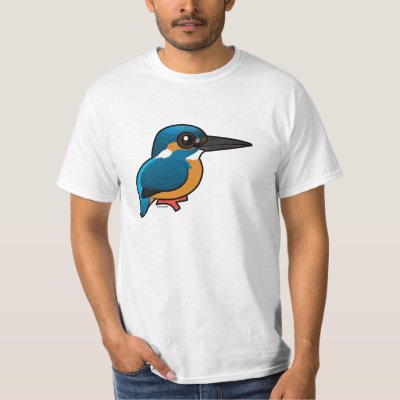Kingfisher Frequently Asked Questions

This week, we’re celebrating the world’s kingfishers! There are about 90 species of kingfisher in the world. These darling birds are often colorful, and they can be found all around the world. Join us as we highlight kingfishers on the Birdorable blog this week! Today we're sharing some FAQs about kingfishers.
Are kookaburras and kingfishers related?
Kookaburras belong to the tree kingfisher, or Halcyonidae, family. Kookaburras tend to be large and heavy compared to other kingfisher species. While birds in the kingfisher family are found all around the world, kookaburras are found in Australia, New Guinea, and the Aru Islands of Indonesia. There are just four species of kookaburra (among a total of about 90 species of kingfisher): the Rufous-bellied Kookaburra; the Spangled Kookaburra; the Blue-winged Kookaburra; and the Laughing Kookaburra.
Why do kingfishers migrate?
Not all kingfishers migrate. In some species, like the Common Kingfisher, parts of the population remain resident all year, while other birds migrate. One reason fish-eating specialist birds leave cold climates as the seasons change is to keep being able to eat! When bodies of water freeze over, its hard to catch fish.
Why do kingfishers have long beaks?
All of the birds in the kingfisher family have long beaks. In all bird species, beak size and shape is influenced by the primary diet of the bird; in fish-eating kingfishers, like the Belted Kingfisher, the beak tends to be longer. Their wedge-shaped bill aids in splashless water entry when diving for prey fish. Kingfishers that find prey on the ground tend to have shorter, broader bills.
 Female Ringed Kingfisher by Tambako The Jaguar (CC BY-ND 2.0)
Female Ringed Kingfisher by Tambako The Jaguar (CC BY-ND 2.0)What is special about kingfisher eyes?
Kingfishers have extremely sharp vision. Kingfishers that hunt for prey in water have exceptional eyes. These birds have two areas of photoreceptor concentration in each eye, one used to find prey while the bird is above the water. The second area of concentration, or fovea, is used to focus on fish while the bird is underwater.
Where do kingfishers nest?
Kingfishers tend to nest in cavities. Many nest in holes dug into the ground, often by bodies of water like rivers and ditches. Other cavities used include tree cavities and old termite nests.
Do kingfishers sing?
The vocal stylings of kingfishers vary wildly. Some species of kingfisher are more vocal than others. The Common Kingfisher has no song, but it does vocalize during flight and when it is alarmed. The multi-part trill of the Woodland Kingfisher is alternatively referred to as a call or a song. Belted Kingfishers are easily recognized by their rattling call and are often heard before they are seen. Perhaps the most familiar kingfisher voice belongs to that of the Laughing Kookaburra. Their exotic-sounding call is often used in movies and television shows that are set in tropical locations.










Comments
Leave a comment
Thank you!